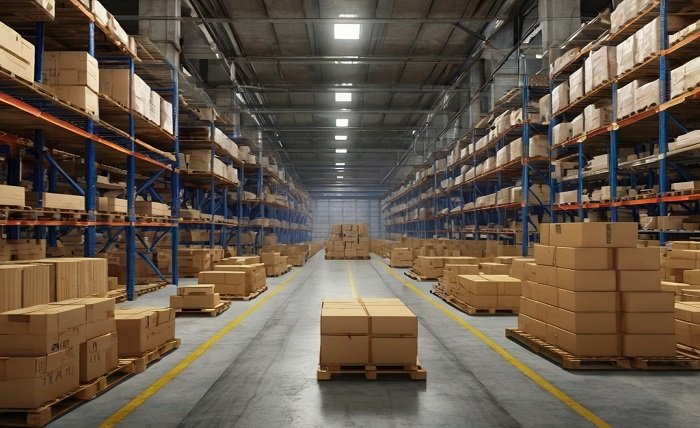Efficient distribution of goods 4 commodities is essential for businesses to succeed in the fast-paced world of today. Advanced logistics solutions are one significant way that technology improves this process. This blog article explores the ways that advanced technology is changing the distribution environment.
Real-Time Tracking and Monitoring

Real-time tracking and monitoring is one of the biggest innovations in the distribution of commodities. Businesses can now trace their shipments through the supply chain thanks to GPS and IoT (Internet of Things) devices. This technology enables businesses to make deliveries with greater accuracy, strengthen security, and store goods in ideal conditions by monitoring variables like humidity and temperature.
Automated Warehousing
Automation is completely changing how warehouses stock and retrieve products. Robotic systems and automated guided vehicles (AGVs) are incredibly accurate and efficient at moving and managing inventory. These technologies expedite the picking and packing procedure, minimize human error, and eventually save operating expenses. As a result, businesses are better equipped to handle larger amounts of merchandise.
Predictive Analytics
Predictive analytics uses big data to forecast demand, improve inventory levels, and optimize the supply chain. Businesses can forecast future demands and modify their distribution strategy by examining previous data and market patterns. Preventive measures reduce overstocks and stockouts, ensuring products are available when and where they are most required.
Blockchain for Enhanced Transparency
Blockchain technology provides a transparent and safe means of tracking product movements and transactions. An immutable ledger that documents every stage of the supply chain creates an irreversible history of a product’s path from producer to customer. Transparency may drastically lower fraud and counterfeiting while also fostering greater trust amongst stakeholders.
Distribution of goods: Drone Deliveries
Distribution of goods: Drone delivery is becoming a more viable option, particularly in remote locations. Drones can transport goods quickly and effectively by avoiding conventional transport routes. This technology is especially useful in areas where traditional logistics may not be feasible due to infrastructure limitations or last-minute deliveries.
Autonomous Vehicles
Autonomous vehicles, such as delivery vans and trucks, will completely transform the distribution industry. These trucks can work around the clock without the constraints of human drivers, which drastically cuts down on delivery times and expenses. Advanced sensors and artificial intelligence (AI) enable autonomous cars to safely and effectively negotiate complicated routes, improving the logistics chain even further.
Advanced Scheduling Optimization
Distribution of goods To find the most efficient routes for delivery vans, sophisticated route optimization software makes use of real-time data and algorithms. This system minimizes fuel usage and delivery times by taking into account variables like weather, traffic, and road construction. Businesses can lower operating expenses and raise customer satisfaction by optimizing their routes.
In summary
Distribution of goods For businesses, the incorporation of technology into the delivery of goods is revolutionary. These developments—which range from blockchain and predictive analytics to automated warehousing and real-time tracking—are improving supply chain efficiency, cutting costs, and increasing transparency. As technology advances, the distribution industry will undoubtedly become more sophisticated, ensuring faster and more reliable delivery than in the past.
FAQ
What are the advantages of real-time tracking for the delivery of goods? Companies can monitor shipments throughout the supply chain with real-time tracking, accurately estimating delivery times, enhancing security, and ensuring optimal conditions for products.
What part does automation play in the warehousing process? Automation uses robotic systems and AGVs to handle inventory, reducing operational costs and human error while boosting warehousing efficiency and accuracy.
How might predictive analytics improve distribution? Predictive analytics estimates demand and optimizes inventory levels by examining past data and market trends, resulting in reduced overstock and stockouts.
What are the benefits of implementing blockchain technology in the supply chain? Blockchain provides a secure, visible ledger of all movements and transactions, which reduces fraud and increases stakeholder trust.
Is it feasible to use drones for delivery? A: It is true that drones can deliver items quickly and efficiently by avoiding typical traffic routes, especially in hard-to-reach places.
